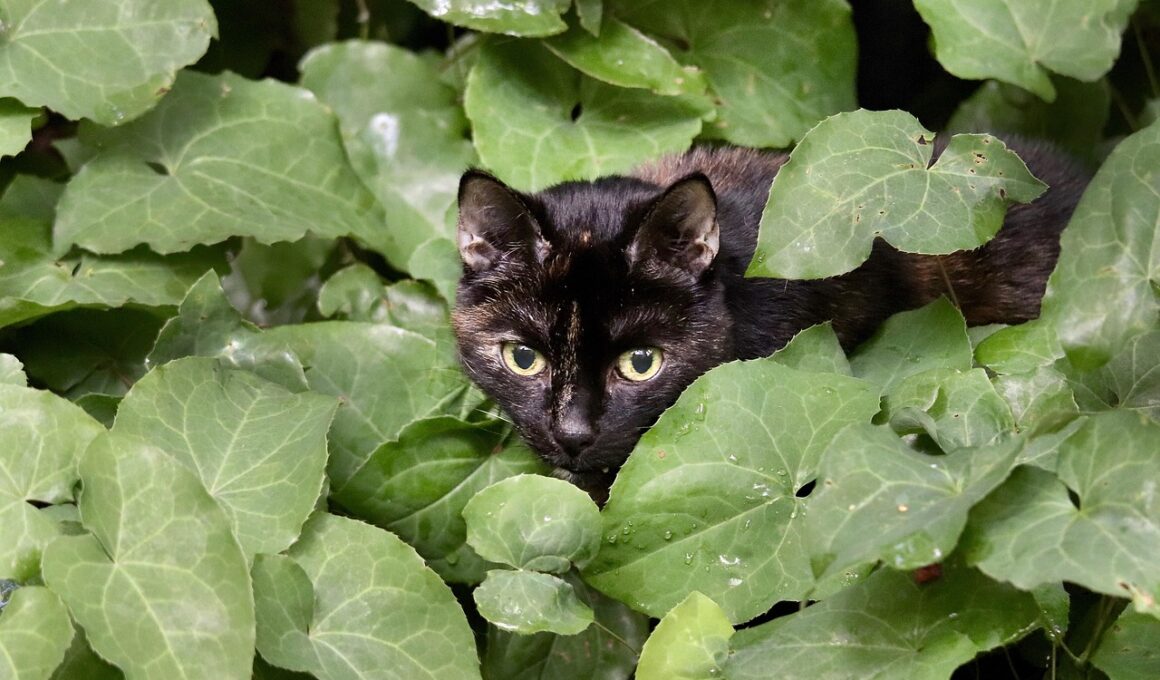Case Studies: Fiber Supplementation Effects in Cats
Fiber plays a crucial role in the diets of cats, influencing various aspects of their health, digestion, and overall well-being. Traditionally, felines do not require high fiber levels in their diets, as they are obligate carnivores. However, the inclusion of fiber can help manage certain health issues. For instance, added fiber can aid in regulating stool consistency and promote healthy bowel movements. Various studies indicate that fiber supplementation can be beneficial for overweight cats, as it may help them feel satiated while consuming fewer calories. This addition to their diets can promote a healthier weight management strategy. Furthermore, fiber can help reduce the risk of developing furballs, a common concern among long-haired cats. Providing a balanced fiber intake through supplements or specific diets can also enhance gut health and improve the overall absorption of nutrients. Nonetheless, understanding these impacts necessitates more specific research, as excessive fiber can lead to issues such as diarrhea or nutritional imbalances. In summary, while fiber supplementation presents promising benefits, it should be tailored to each cat’s individual needs and health conditions.
Many studies have demonstrated the positive effects of fiber on diabetic cats. Research suggests that incorporating soluble fibers such as psyllium or beet pulp can help lower blood glucose levels after meals. These types of fibers can slow the absorption of glucose in the gastrointestinal tract, potentially reducing insulin resistance. For cats diagnosed with diabetes, this approach can be crucial in regulating their overall health. A controlled study observed that cats fed diets enhanced with these fibers showed improved glycemic control, with fewer episodes of hyperglycemia. Additionally, it was noted that these dietary interventions didn’t compromise their body condition and allowed for controlled calorie intake. More importantly, fiber showed promise in reducing the risk of developing further complications due to diabetes, such as obesity and pancreatitis. It’s important to highlight that any changes in diet for diabetic cats should be made under veterinary supervision. As such, incorporating fiber as an effective tool can potentially enhance the diet of diabetic cats and lead to improved health outcomes. However, each case should be evaluated individually to determine the optimal fiber type and quantity needed for that specific feline.
Fiber for Digestive Health
Fiber supplementation can play a significant role in promoting digestive health in cats, particularly in those suffering from conditions like constipation. Studies have shown that increasing dietary fiber can help alleviate intestinal blockages by promoting smoother bowel movements. This is especially beneficial for senior cats, who may experience reduced digestive motility. In a particular study, cats with a history of constipation showed marked improvements in their defecation frequency and stool consistency when provided with higher fiber diets. Soluble and insoluble fibers may work synergistically, supporting both gut health and regularity. Moreover, fiber can provide prebiotic benefits, fostering a healthy microbial environment in the intestines. A balanced microbiome is vital for nutrient absorption and overall health. Several trials indicated that cats benefit from a diverse array of fibers, such as inulin and chicory root extracts. The introduction of these fibers not only improved gut transit time but also positively impacted the cats’ overall health indicators, including energy levels and coat quality. Consequently, balancing fiber types and volumes can help promote optimal digestive health, enhancing the quality of life for our feline friends.
Aside from digestive health, fiber supplementation has been studied for its potential role in preventing obesity in cats. With obesity becoming an epidemic among house pets, finding effective strategies for weight management is essential. Research indicates that fibers such as psyllium husk can help cats feel fuller without significantly increasing caloric intake. In a notable experiment, overweight cats were placed on a fiber-enriched diet, resulting in a gradual and sustainable weight loss over a 12-week period. Cats on high-fiber diets exhibited a decrease in food intake while still expressing high energy levels. The increased fiber content in their meals contributed to an enhanced sense of satiety, thereby supporting weight reduction efforts. Additionally, fiber’s slow digestion means that cats can enjoy longer periods between meals, promoting better eating patterns. However, not all fiber sources yield the same results. Studies suggest that choosing the right fibers and moderation in supplementation is key to achieving successful weight reduction. Thus, understanding the nuances of fiber types can better support our cats’ weight management, significantly reducing obesity-related health issues.
Neuroprotective Effects of Fiber
Emerging research has begun to explore the neuroprotective effects of fiber in cats, indicating that dietary fiber may also play a role in cognitive health. Older cats often experience cognitive decline, similar to humans, which can significantly affect their quality of life. A recent study evaluated the impact of various fiber types on brain function. Cats fed diets rich in soluble fibers showed improvements in cognitive tests, suggesting enhanced neuronal activity and memory retention. The potential mechanism behind this effect might relate to fiber’s role in regulating blood glucose levels, ensuring consistent glucose availability for optimal brain function. Furthermore, diets enriched with certain fibers may support overall brain health by improving blood circulation and reducing oxidative stress. Antioxidant properties associated with these fibers could prevent cellular damage in the brain. As veterinary nutritionists continue to explore fiber’s role in promoting cognitive function, the implications could lead to more refined dietary recommendations for aging cats battling cognitive dysfunction syndrome. Thus, incorporating adequate fiber into an older cat’s diet could be essential in maintaining cognitive health and overall well-being.
The process of incorporating fiber into a cat’s diet should be gradual to avoid gastrointestinal disturbances. A sudden shift to high-fiber foods can lead to issues like bloating or diarrhea, which can be distressing for both cats and their owners. Veterinary guidance is crucial during this transition; a veterinary nutritionist can provide tailored recommendations based on individual dietary requirements. The introduction of fiber should consider the type of fiber as well. Soluble fibers might be introduced first, followed by the addition of insoluble fibers for more structural support in the diet. Monitoring the cat’s digestive response throughout this process will help identify the appropriate fiber levels. Keeping a food diary can assist owners in tracking changes in bowel movements and overall behavior. Adequate hydration plays a critical role when increasing fiber intake. Water availability supports smooth digestion and helps maintain healthy bowel function. Ultimately, regular veterinary consultations should follow the dietary changes to ensure the cat’s health and well-being align with the introduced fiber. Properly managing fiber integration can significantly enhance the quality of life and health outcomes in cats.
Conclusion: The Future of Fiber in Cat Nutrition
In conclusion, the integration of fiber into cat diets holds numerous potential benefits that enhance the overall health of our feline companions. From aiding in weight management and supporting digestive health to potentially improving cognitive function, fiber is gradually being recognized as an important component of feline nutrition. Ongoing research continues to shine light on the efficacy and types of fiber that best suit cat physiology. As veterinarians and pet owners alike become more informed about the positive effects of fiber, we can expect dietary recommendations to evolve, offering tailored fiber solutions to address common health concerns. Working collaboratively with pet nutritionists can provide clarity on optimal fiber amounts and sources needed to achieve specific health goals. Best practices regarding fiber intake will likely cultivate healthier lifestyles for cats, ensuring their health and immunity are prioritized. To sum up, as our understanding of fiber’s roles expands, so does its potential impact on feline health. Focusing on a well-rounded, fiber-inclusive diet can significantly boost a cat’s quality of life and longevity, ushering in a new era of cat nutrition strategies.
Cats continue to challenge our understanding of their dietary needs, leading to innovative dietary practices. The study of fiber’s effects could transform feline nutrition in the years to come. As more case studies emerge, we will come to better understand how to optimize feline diets to meet the natural requirements of these unique creatures.


